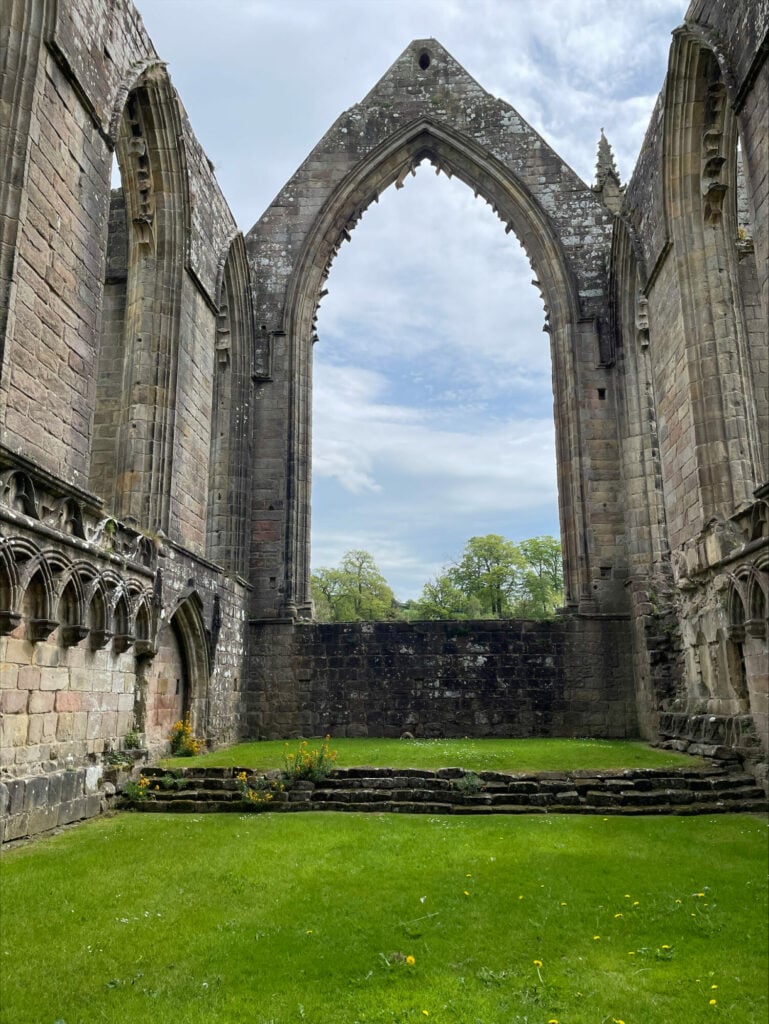The remains of the abbey lie in the heart of the Yorkshire Dales near Skipton, along the banks of the River Wharfe. Today they form part of the Duke of Devonshire’s estate but originally comprised a former 12th-century Augustinian priory. Founded in 1155 by monks from Embsay who were granted land here by Lady Alice de Romille/Rumilly of Skipton Castle, the priory’s construction took over a century to complete and was still in progress when Henry VIII and his commissioners began dissolving the monasteries in 1539. When finished, it was one the largest monasteries in England.

The final prior, Moone, commissioned the construction of the Perpendicular tower in 1520 on foundations laid directly outside the 13th-century west facade. It was rising ever higher in efforts to outdo the nearby abbeys of Furness and Fountains. However, the work came to an abrupt halt in 1539, leaving it a roofless ruin, only partly connected to the church. Over the door, the prior’s prayer can still be made out (modernised), ‘In the year of our Lord 1520 R. [Moone] began this foundation, on whose soul God have mercy. Amen’.
Following the Dissolution, the priory buildings were sold to the Clifford family of Skipton Castle, who had been patrons of the abbey church since 1310. It was later sold to the Cavendish family, the Dukes of Devonshire, whose main seat was Chatsworth in Derbyshire. They still own and manage the estate, and even begun hiring out Bolton Abbey Hall (which incorporates the former monastery gatehouse), a summer bolthole for the family since the 18th century, where Queen Elizabeth and Prince Philip stayed in 2005 as guests of the Devonshires when Royal Ascot was held in York.
The main surviving portion of the abbey is the nave of the former priory church which endured after Prior Moone negotiated with Thomas Cromwell at the Dissolution to secure it as a place of worship for the local community. It continues as the parish church of St Mary and St Cuthbert for the village of Bolton-in-Wharfedale, though has seen Victorian restoration and rebuilding. Don’t miss the series of medieval wall paintings and stained-glass windows by 19th-century celebrated architect, Augustus Pugin.